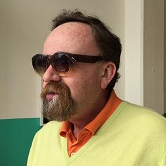Visual Culture Exchange Across the Baltic Sea Region during the Long 19th Century
A special issue of Arts (ISSN 2076-0752).
Deadline for manuscript submissions: closed (31 December 2023) | Viewed by 9408
Special Issue Editors
Interests: 19th-century European painting, particularly Scandinavian; Symbolism; Realism; nationalism and art; artists’ colonies; landscape painting and science & technology; graphic design; public art
Special Issue Information
Dear Colleagues,
The long nineteenth century occupies a precarious place in the history of the visual and material culture of the Baltic Sea region, at once containing the most popular and obscured areas of historical and artistic investigation. Since the 1990s, the concept of a Baltic Sea region encompassing the sea and its surrounding land has fostered transnational thinking about the region, transcending Cold War binaries of ‘East’ and ‘West’ in an effort to view the area more holistically. Yet, national funding schemes in these countries—Denmark, Estonia, Finland, Germany, Latvia, Lithuania, Norway, Poland, Sweden, and Russia—continue to encourage a historiographical imbalance that downplays the significance of the Baltic Sea as a cultural crossroads. Our publication foregrounds artistic exchanges and the ideological or pragmatic factors that motivate them in order to create a common ground for viewing the Baltic Sea as a nexus of cultural entanglements across the long nineteenth century (ca. 1750-1920).
This Special Issue concerns an artistic exchange across the Baltic Sea region 1750-1920: a neglected yet important topic. Its main objective is to demonstrate the degree to which this region witnessed a dynamic cultural exchange in the modern period, and was not as many envision and scholarly trends have reified, a set of isolated cultures defined largely by linguistic differences. Its central theme is an exchange—the ways ideas, individuals, technologies, and values migrate from one geographical location to another.
Dr. Thor J. Mednick
Dr. Bart Curtis Pushaw
Guest Editors
Manuscript Submission Information
Manuscripts should be submitted online at www.mdpi.com by registering and logging in to this website. Once you are registered, click here to go to the submission form. Manuscripts can be submitted until the deadline. All submissions that pass pre-check are peer-reviewed. Accepted papers will be published continuously in the journal (as soon as accepted) and will be listed together on the special issue website. Research articles, review articles as well as short communications are invited. For planned papers, a title and short abstract (about 100 words) can be sent to the Editorial Office for announcement on this website.
Submitted manuscripts should not have been published previously, nor be under consideration for publication elsewhere (except conference proceedings papers). All manuscripts are thoroughly refereed through a double-blind peer-review process. A guide for authors and other relevant information for submission of manuscripts is available on the Instructions for Authors page. Arts is an international peer-reviewed open access semimonthly journal published by MDPI.
Please visit the Instructions for Authors page before submitting a manuscript. The Article Processing Charge (APC) for publication in this open access journal is 1400 CHF (Swiss Francs). Submitted papers should be well formatted and use good English. Authors may use MDPI's English editing service prior to publication or during author revisions.
Keywords
- Baltic
- 19th century
- exchange
- Sweden
- landscape





